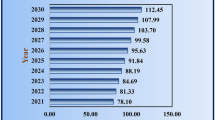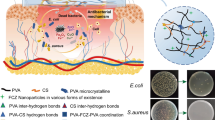Abstract
Sol-gel based nanocomposite hydrophobic coating was applied on soda lime glass surface and cured at different heating rates, soaking temperatures and durations of time. Near infra-red radiation and conventional thermal curing methods were employed to densify the coatings. Effect of heating rate on hydrophobic behavior of all the coatings was studied by evaluating the water contact angle, microstructure and surface topography. Hierarchical micro-nano patterns formed on the coating were analyzed with the help of Field Emission Scanning Electron Microscopy and Atomic Force Microscopy. Conventional curing and near infra-red radiation curing methods were comparatively evaluated with respect to presence of asperities as a function of heating rate and soaking time. Both near infra-red radiation and conventional thermal cured coatings exhibited hydrophobicity, with thermal cured coatings exhibiting slightly improved hydrophobicity due to difference in the hierarchical micro-nano structure. The difference in the evolution of surface topography obtained with the different curing techniques could be explained due to the difference in heating rates achievable in conventional thermal and near infrared curing methods.

Graphical abstract
Highlights
-
Sol-gel hydrophobic coatings cured with thermal and NIR radiation at different heating rates.
-
Curing temperature and soaking times varied as process parameters.
-
Water contact angle, surface morphology and topography studied for all samples.
-
Heating rate was found to affect solvent evaporation rate which gave different asperities.
-
Different asperities pattern obtained affected hydrophobicity.










Similar content being viewed by others
References
Manoharan K, Bhattacharya S (2019) Superhydrophobic surfaces review: Functional application, fabrication techniques and limitations. J Micromanufacturing 2(1):59–78
Parvate S, Dixit P, Chattopadhyay S (2020) Superhydrophobic surfaces: insights from theory and experiment. J Phys Chem B 124(8):1323–1360
Yu S, Wang X, Wang W, Yao Q, Xu J, Xiong W (2013) A new method for preparing bionic multi scale superhydrophobic functional surface on X70 pipeline steel. Appl Surf Sci 271:149–155
Rao KS, Yogapriya R, Raju KRC et al. (2021) Effect of curing technique on the properties of superhydrophobic coatings. Trans Indian Inst Met 74:1923–1932
Yang H, Jiang P (2010) Scalable fabrication of superhydrophobic hierarchical colloidal arrays. J Colloid Interface Sci 352:558–565
Kim S, Kim DH, Choi SH et al. (2020) Effect of surface pattern morphology on inducing superhydrophobicity. Appl Surf Sci 513:145847
Hejazi I, Seyfi J, Hejazi E, Mir G, Sadeghi M (2015) Investigating the role of surface micro/nano structure in cell adhesion behavior of superhydrophobic polypropylene/nanosilica surfaces. Colloids surf B: Biointerfaces 127:233–240
Darmanin T, Guittard F (2014) Recent advances in the potential applications of bioinspired superhydrophobic materials. J Mater Chem A 2(39):16319–16359
Jeevahan J, Chandrasekaran M, Joseph GB, Durairaj RB, Mageshwaran G (2018) Superhydrophobic surfaces: a review on fundamentals, applications, and challenges. J Coat Technol Res 15:231–250
Varughese SM (2020) Durability of submerged hydrophobic surfaces. Soft Matter 16:1692–1701
Jing X, Guo Z (2018) Biomimetic super durable and stable surfaces with superhydrophobicity. J Mater Chem A 6:16731–16768
Nouri NM, Ahangar SB, Faal N (2011) The effect of curing condition on superhydrophobic surface for 7075Al. J Dispers Sci Tecnol 33(6):771–774
Esmaeilpour M, Niroumand B, Monshi A, Salahi E, Ramezanzadeh B (2015) The effects of curing condition on the surface characterstics of two pack polyurethane coatings containing low surface energy additive. Soft Mater 13(3):37–41
Luo Z, Zhang Z, Wang W, Liu W, Xue Q (2010) Various curing conditions for controlling PTFE micro/nano-fiber texture of a bionic superhydrophobic coating. surface Mater Chem Phys 119:40–47
Griffin R, Hooper K, Cecile C, Jenny B (2022) Comparative study of radiative heating techniques for fast processing of functional coatings for sustainable energy applications. Johnson Matthey Technol Rev 66(1):32–43
Knischka R, Lehmann U, Stadler U, Mamak M, Benkhoff J (2009) Novel approaches in NIR curing technology. Prog Org Coat 64(2-3):171–174
Schmitz C, Strehmel B (2019) NIR LEDs and NIR lasers as feasible alternatives to replace oven processes for treatment of thermal-responsive coatings. J Coat Technol Res 16:1527–1541
Choi JW, Chun WP et al. (2016) Experimental studies on a combined near infrared (NIR) curing system with a convective oven. Prog Org Coat 91:39–49
Shim MH, Kim J, Park CH (2014) The effects of surface energy and roughness on the hydrophobicity of woven fabrics. Text Res J 84(12):1268–1278
Subasri R, Madhav CS, Somaraju KRC, Padmanabham G (2012) Decorative hydrophobic sol-gel coatings densified using near-infrared radiation. Surf Coat Technol 206(9):2417–2421
Acknowledgements
Authors gratefully acknowledge the funding from DBT through grant number BT/PR31908/MED/29/1401/2019. Authors would also like to acknowledge Director ARCI for the keen interest and constant encouragement provided throughout the course of this investigation.
Author contributions
The manuscript was written through the contributions of all authors. All authors have approved the final version of the manuscript. This manuscript has not been submitted elsewhere for consideration for publication.
Funding
Funding agency Department of Biotechnology (DBT) for supporting the work through grant no BT/PR31908/MED/29/1401/2019.
Author information
Authors and Affiliations
Corresponding author
Ethics declarations
Conflict of interest
The authors declare no competing interests.
Additional information
Publisher’s note Springer Nature remains neutral with regard to jurisdictional claims in published maps and institutional affiliations.
Supplementary Information
Rights and permissions
About this article
Cite this article
Patra, R., Raju, K.R.C.S., Murugan, K. et al. Effect of heating rate on asperities pattern formed in sol-gel derived nanocomposite hydrophobic coatings. J Sol-Gel Sci Technol 103, 50–61 (2022). https://doi.org/10.1007/s10971-022-05762-8
Received:
Accepted:
Published:
Issue Date:
DOI: https://doi.org/10.1007/s10971-022-05762-8




